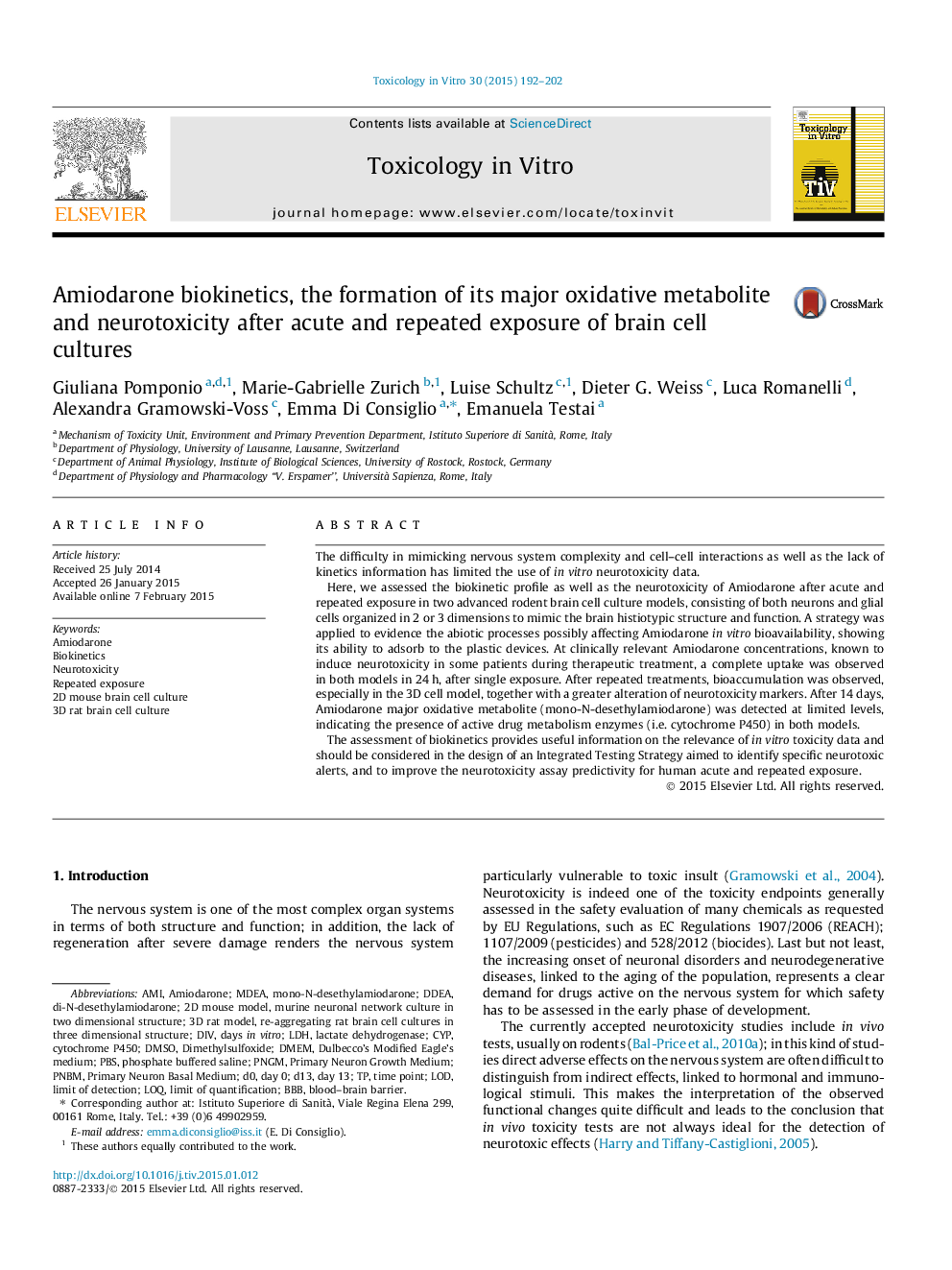| Article ID | Journal | Published Year | Pages | File Type |
|---|---|---|---|---|
| 5861308 | Toxicology in Vitro | 2015 | 11 Pages |
â¢Amiodarone biokinetics was studied in 2D and 3D brain cell models.â¢After single treatment Amiodarone cell uptake was completed after 24 h.â¢After repeated exposure Amiodarone bioaccumulates, especially in the 3D cell model.â¢Bioaccumulation is paralleled to some alterations of neurotoxicity markers.â¢The two brain cell models are able to form the Amiodarone major oxidative metabolite.
The difficulty in mimicking nervous system complexity and cell-cell interactions as well as the lack of kinetics information has limited the use of in vitro neurotoxicity data.Here, we assessed the biokinetic profile as well as the neurotoxicity of Amiodarone after acute and repeated exposure in two advanced rodent brain cell culture models, consisting of both neurons and glial cells organized in 2 or 3 dimensions to mimic the brain histiotypic structure and function. A strategy was applied to evidence the abiotic processes possibly affecting Amiodarone in vitro bioavailability, showing its ability to adsorb to the plastic devices. At clinically relevant Amiodarone concentrations, known to induce neurotoxicity in some patients during therapeutic treatment, a complete uptake was observed in both models in 24Â h, after single exposure. After repeated treatments, bioaccumulation was observed, especially in the 3D cell model, together with a greater alteration of neurotoxicity markers. After 14Â days, Amiodarone major oxidative metabolite (mono-N-desethylamiodarone) was detected at limited levels, indicating the presence of active drug metabolism enzymes (i.e. cytochrome P450) in both models.The assessment of biokinetics provides useful information on the relevance of in vitro toxicity data and should be considered in the design of an Integrated Testing Strategy aimed to identify specific neurotoxic alerts, and to improve the neurotoxicity assay predictivity for human acute and repeated exposure.
